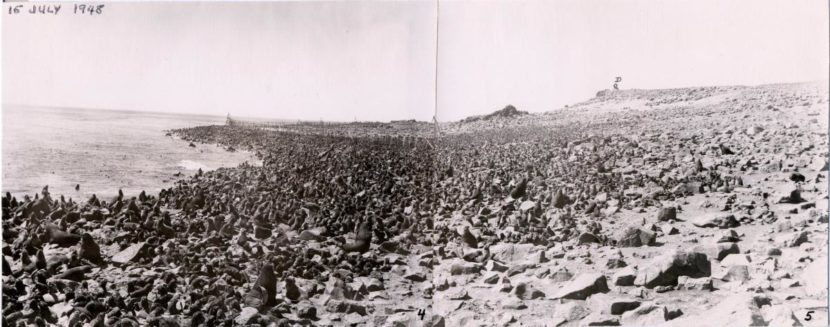
Northern fur seal pup production on St. Paul Island has hit its lowest level since 1915.
Every other year members of Seattle’s Marine Mammal Laboratory travel to the Pribilof Islands to estimate how many pups are born. Scientist Rod Towell has been a part of the counts since 1992. He said the difference at the rookeries on St. Paul is striking.
“I’m not going to say it was full coverage, but it looked like a moving carpet in a sense,” Towell said. “There was movement all across the rocks. You can see them, but there’s seals moving everywhere. Whereas now it looks more patchy.”

He estimates the seals are covering about half as much land as they did on his first trip to the island.
The cause of the decline Towell said is a mystery.
“There hasn’t been commercial pressure on St. Paul island since 1984,” Towell said. “The fur market has gone way down. We haven’t seen any real obvious mortality pressure on this population since then.”
Towell believes a different research project may be the key to solving this mystery.
Every year since the late 2000s, the team has tagged fur seal pups on St. Paul and St. George Islands for a new project.
Towell thinks that data will help pinpoint where the population is suffering most and if there are big variations in the numbers of pups born each year.
Zoe Sobel is a reporter with Alaska's Energy Desk based in Unalaska. As a high schooler in Portland, Maine, Zoë Sobel got her first taste of public radio at NPR’s easternmost station. From there, she moved to Boston where she studied at Wellesley College and worked at WBUR, covering sports for Only A Game and the trial of convicted Boston Marathon bomber Dzhokhar Tsarnaev.




